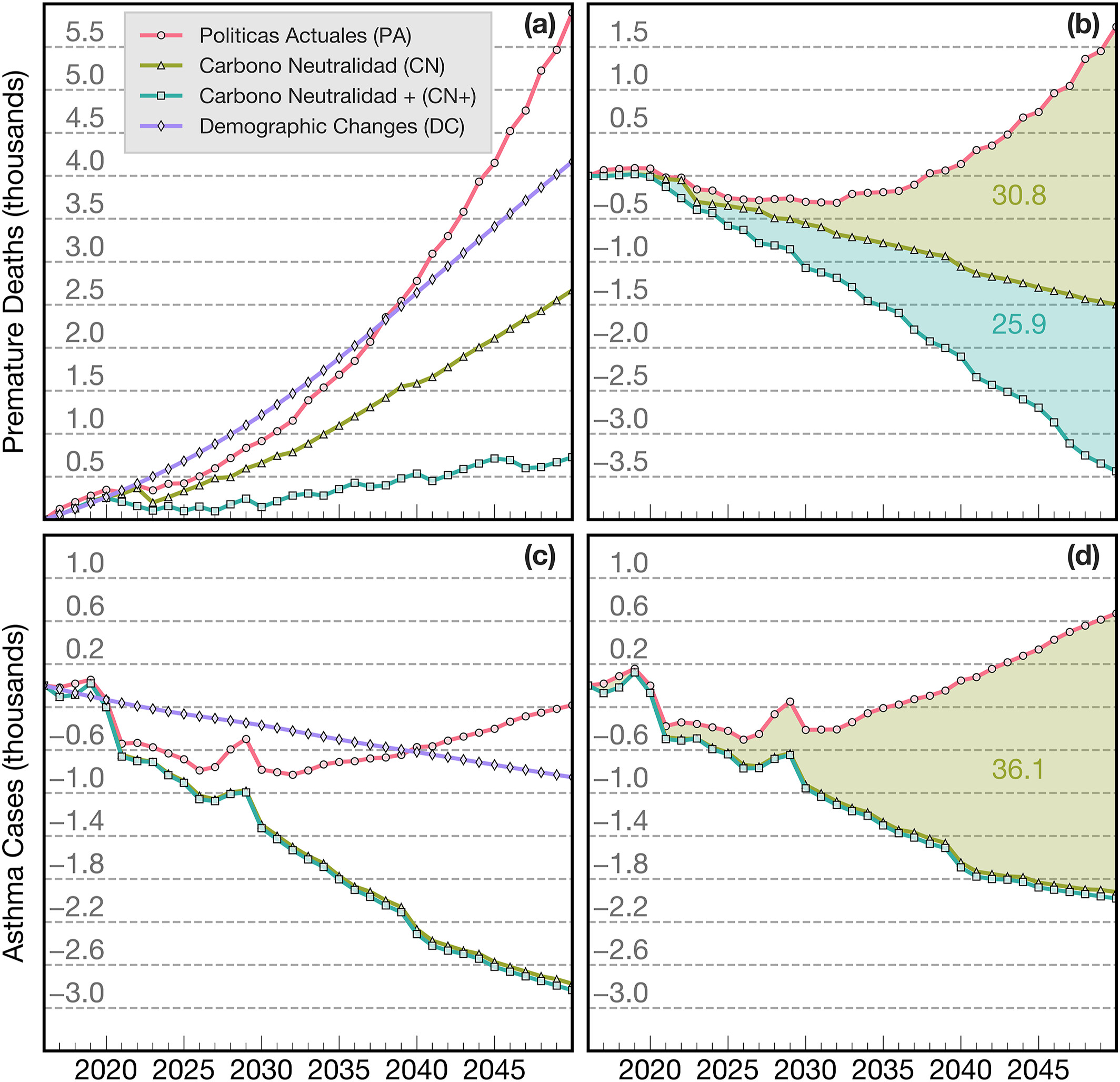 Home
Home
Bottom Line: Climate action is irrevocably linked to air pollution. Sources of greenhouse gases often
co-emit air pollutants and their chemical precursors; thus, action targeting greenhouse gases can result in
air pollution-related co-benefits that are realized through improvements in air quality.
Research: We perform GEOS-Chem adjoint simulations to calculate the sensitivities of
pollutant exposures to their precursor emissions. We then combine these simulated sensitivities
with gridded emission projections for different climate futures to quantify how changes in emissions could
affectg air quality in the future and to determine how source-receptor relationships
between specific countries and regions may differ across different climate futures.

In the above figure, we present the overall PM2.5 (a) and NO2 (b) health impacts in Santiago, Chile associated with air pollution changes from different climate emission projections from Chile's NDCs. We additionally quantify the impacts relative to demographic changes (c and d).
Nawaz, M.O., Henze, D.K., Anenberg, S.C., Braun, C., Miller, J., Pronk, E. A source
apportionment and emission scenario assessment of PM2.5- and O3-related health impacts in G20 countries.
GeoHealth.
10.1029/2022GH000713
Nawaz, M.O., Henze, D.K., Huneeus, N.J., Osses, M., Álamos, N., Opazo, M., Gallardo, L.,
Sources of air pollution health impacts and co-benefits of carbon neutrality in Santiago, Chile Journal
of Geophysical Research: Atmospheres.
10.1029/2023JD038808